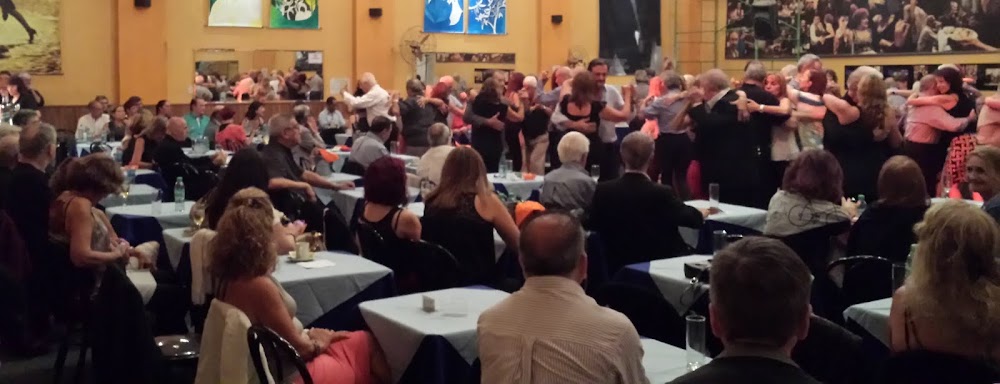At a milonga a woman I know was interested in dancing the other role but never had. I know how daunting that can feel. An easier way in is to dance "more equally" I suppose is how I think of it - with more neutrality, or perhaps ambiguity over who is in which role. Besides whenever I have done this it has been a lot of fun.
How then to remove the notion of a dance role - how to reduce the idea of one person necessarily “guiding” most or initiating movement? How to allow more opportunity for the newer partner to explore that while still able to return fluidly to the role they already know, but perhaps make forays in to the other role?
For my own part, I suspected the dance might change very much and was curious to see how. Yet I have found no matter your intentions, if the arms take the position of a traditional embrace, the person in the guy role is more likely to “guide”. The only person with whom this has not been the case is my (now) nine year old son and that is because despite that we take traditional positions they seem irrelevant to what actually happens. With him I am able not to think about or be influenced by them and I am not sure he knows which role the traditional arm positions signify.
My friend and I opened the embrace and danced with only our forearms clasping. It was fun. We did things I normally would not have the nerve to do - but they just happened. I realised the person whose arms were on the outside was still the “guider”. Or, when one person’s arms were underneath, they became, naturally, more often the guider.
On reflection, I realised the only way to remove this slight inclination to guide would be to dance in an embrace where there was no “hold” between the left hand of one person and the right of the other. It would be an embrace as you embrace a friend But such an embrace sustained over three minutes is very close. The slight extension of the man’s left arm and the woman’s right in a traditional dance embrace gives a formality (and stability) to the kind of hug you would give your family or friends. Still, I was curious how this kind of embrace would affect who “guides”. I wondered idly who I could do that with, not really imagining it would happen.
The very next week, I danced with S. At first I was in the other role. Then we swapped. It was busy, we are both tall and she said she only wanted to “guide” one track. Then I asked if we could try the way O and I had danced. It was a lot of fun, again. Still, the Counting House in Edinburgh is a small room and the atmosphere of what’s “right” and what’s “wrong” can in some quarters be quite oppressive. I was aware in the milonga that, even if we were just dancing, out of the embrace we might look like we practising, which I don’t feel right in a milonga.
I also became aware of the thought that we were perhaps doing what I have seen couples doing - “queering” the dance is how I have heard it described. I have never been altogether sure what that means. When I swap roles I do not feel I "queer the dance" but I did a bit with S. I think it was to do with the open hold and the experimental nature of the dance. The "queering" was definitely something I felt within the context of others around us, from whom we were dancing differently in that they were mostly in the embrace. I was enjoying the dance but the context I found confusing. Though I swap roles in all sorts of combinations and am tall I don’t usually feel I stick out, whereas I felt we did now. I said to my partner only that it was curious such a small thing as whose arms were on the outside of the hold or the underneath of the hold could suggest more the guiding role.
She said the only way to avoid that is to embrace would be to dance in the embrace I described above - each of us with both arms around the other. So we did that, changing role seamlessly and by feel again. It was indeed more “equal” - who guided and when that changed was more intuitive and not determined by arm position. It was surprising and delightful, the most fun thing I have done in dance in a long time. It was a sort of heightened listening, heightened response.
Although I realised it was more radical than the way we had danced the previous track, I was less concerned about context now, perhaps because we were back in the embrace. S is naturally musical, fluid, creative, spontaneous. She told me that - like me, and my son - she learnt the other role without lessons. I couldn’t help but notice some young guys from the Pannonica quartet watching us, attentively. They had had a brief spot that night while one of them, Lucas, DJd for us. They looked Argentinian. I couldn’t tell what they were thinking. With presumably much experience in the milongas, or perhaps just natural tact, they were suitably expressionless.

No comments:
Post a Comment